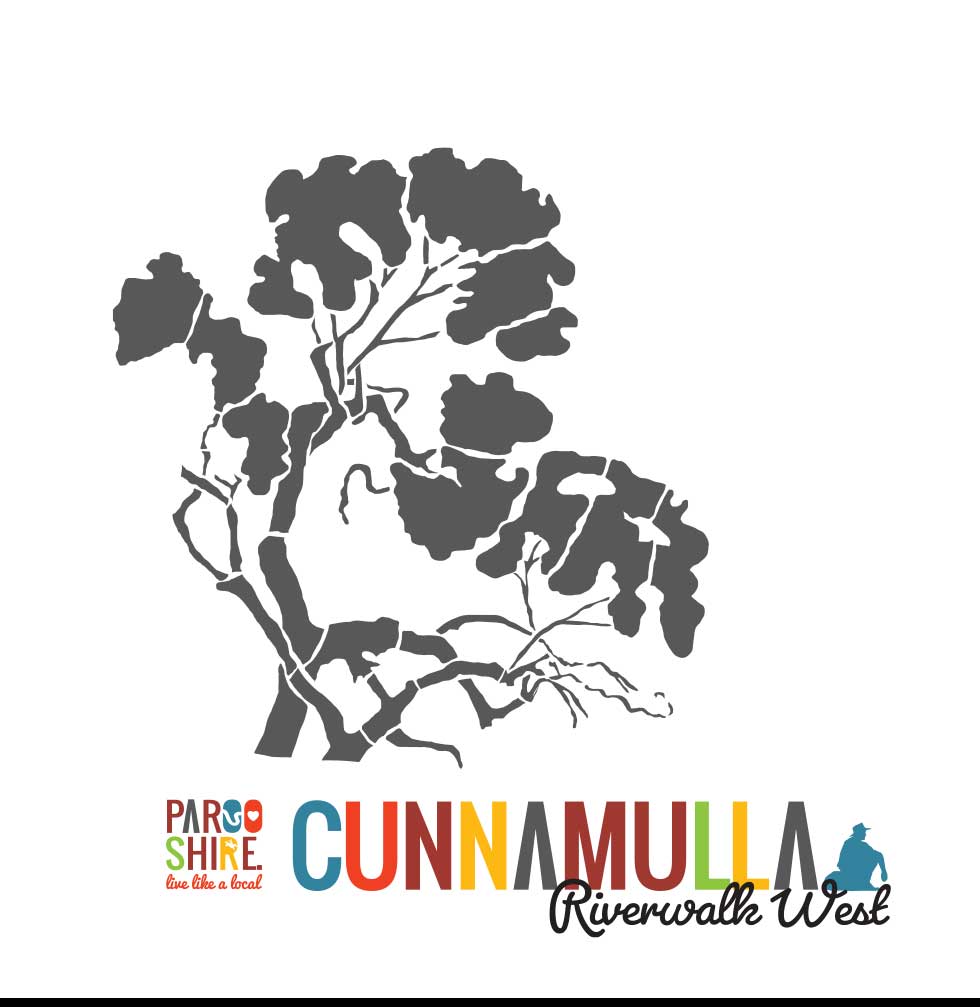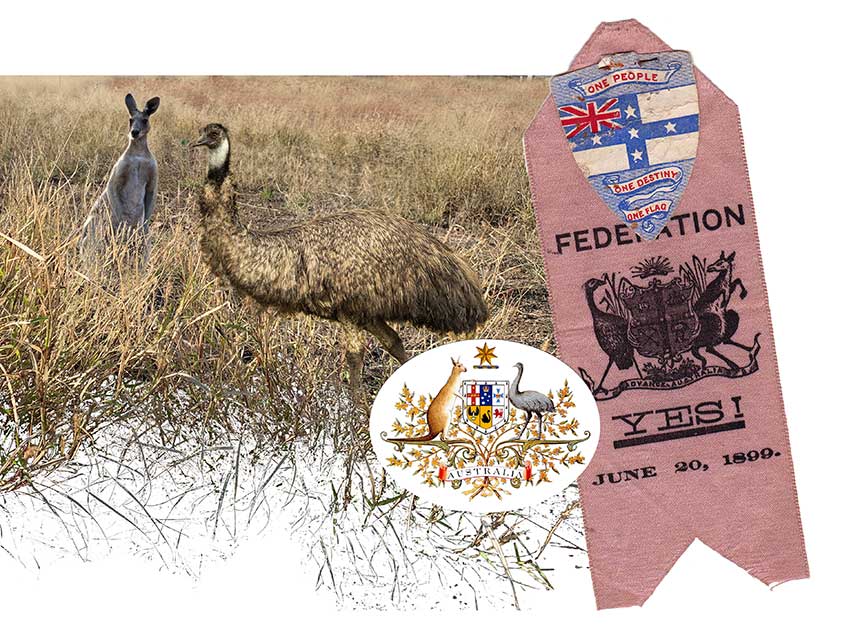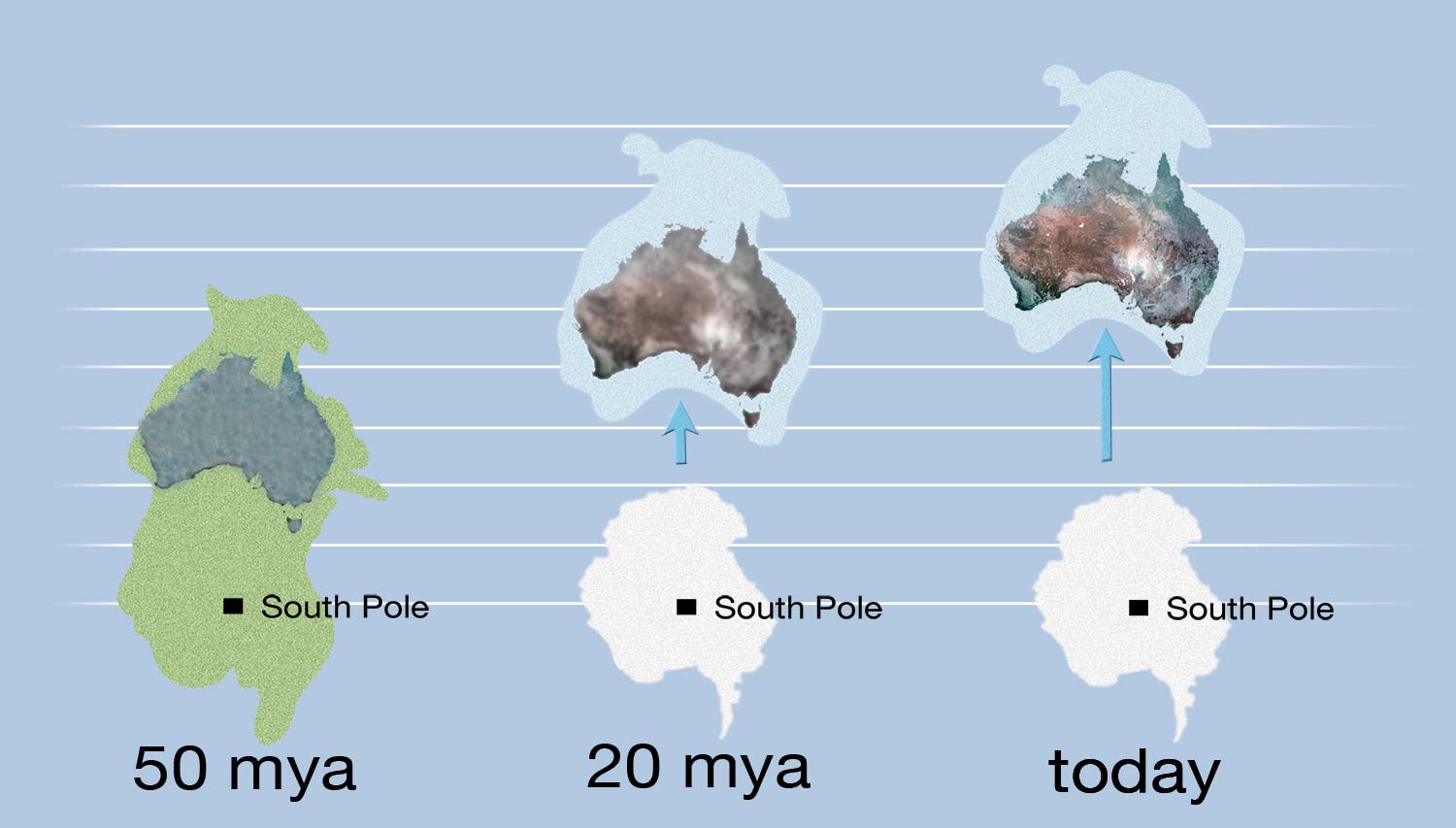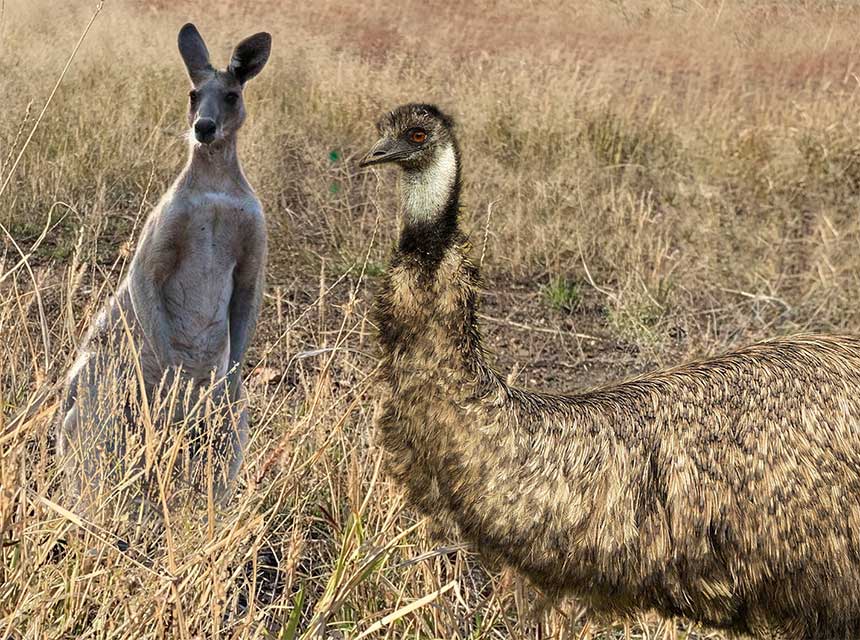

evolving Australian icons
As the twin national icons representing Australia's unique plants and animals, the kangaroo and emu invite us to pause for a moment to consider how our wildlife evolved the way it did.
This path then leads directly to the story of continental drift and the way in which Australia finally broke free of its Gondwana connections when it separated from Antarctica 50 mya.
Since this time Australia's been on its own - adrift in the southern latitudes as the Great Southern Ocean slowly opened up behind it.

Instead of warm ocean currents being guided down from the equator to the the shores of Antartica, the icy waters of the south were left to their own devices. As a result all the abundant plant life spread across Antartica was encased in ice and Australia was left to adapt to a much drier and colder world than it had been used to.
It was these two things acting together – total isolation and having to adapt to a changing environment – that were the forces shaping the evolution of Australia's unique wildlife.
the kangaroo and emu
Some idea of the way in which the kangaroo and emu were immediately adopted as landmarks used to good effect by European explorers comes from the journal of Thomas Mitchell on his journey north across the headwaters of the Warrego River in 1846.
As he travelled across the country of the Bogan River in January he lamented that:
"In none of the deep beds of the former ponds or lagoons could we discover any water."
It was so dry that:
"nor were even kangaroos or emus to be seen, as formerly, any longer inhabitants of these parts." Strangely however "the grass was nevertheless excellent and abundant".
Here Mitchell is encountering the remarkable grass of the Astrebla genus that was later to bear his name.
One of the striking uses that made emu spotting such a valuable pasttime was the fact that when you saw emus, water was likely to be close by. As Mitchell described it:
"I found the beds of the ponds moist and seven emus running from one ahead of me first indicated the situation of a large pond."
Several days later he also noted:
"Following this downwards I found the valley to improve and two retreating emus drew our attention to a particular spot where we found water at length in a pond."
With regard to the importance of both kangaroos and emus to Aboriginal people Mitchell described how his guide Yuranigh:
"showed me several tracks where a native had been following a kangaroo's track and he told me of a certain method adopted by the native of killing the kangaroo during wet weather - which is to pursue the track following it day after day until they overtake the animal which, on being so incessantly followed, becomes at length so defenceless, that one native can despatch it with a tomahawk."
The importance of cultural burning practices to attract kangaroo and emu was also commented on by Mitchell who noted that:
"The extensive burning by the natives, a work of considerable labour, and performed in dry warm weather, left tracts in the open forest, which had become green as an emerald with the young crop of grass. These plains were thickly imprinted with the feet of kangaroos, and the work is undertaken by the natives to attract these animals to such places. How natural must be the aversion of the natives to the intrusion of another race of men with cattle: people who recognise no right in the aborigines to either the grass they have thus worked from infancy, nor to the kangaroos they have hunted with their fathers. No, nor yet to the emus they kill FOR their fathers ONLY; these birds being reserved, or held sacred, for the sole use of the old men and women!"


6. Mitchell Grass
8. Pelicans
